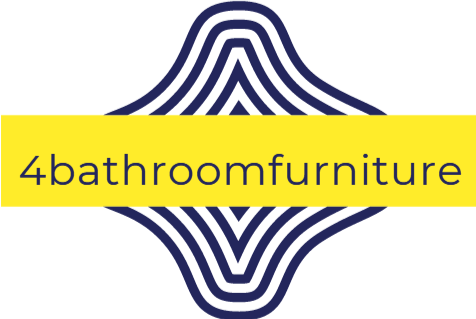When most of us think of lighting systems, we picture a traditional light bulb or fluorescent tube. However, with the advent of technology, new lighting solutions such as smart lights have emerged. Smart lights are designed to be energy-efficient, customizable, user-friendly, and environmentally friendly. In this article, we will discuss in detail the rise of smart lights and their impact on the lighting industry.
What are Smart Lights?
Smart lights are an advanced lighting system that allows you to manage the lighting in your home remotely using a mobile device or voice commands. These lights are connected to your home’s Wi-Fi network and can be controlled by an app or voice assistant like Amazon Alexa, Google Home or Apple HomeKit. This feature makes it possible for you to adjust the brightness, color, and timing of your lights without having to touch the switch.
Features of Smart Lights
Smart lights have several features that make them distinctly different from traditional lighting systems. Here are some of them:
- User-friendly interface
- Energy-efficiency
- Versatile and customizable
- Remote control access
- Integration with other smart home devices
- Longevity
Advantages of Smart Lights
There are several advantages to using smart lights. Below are some of the benefits they provide:
Eco-friendly
Smart lights are designed to be environmentally friendly. They consume less energy than traditional bulbs and can last for many years without needing replacement. This feature reduces the amount of waste and energy consumption associated with traditional lighting systems.
Convenience and Flexibility
Smart lights allow you to control your home’s lighting from anywhere, at any time, through your smartphone or voice assistant. This feature provides greater comfort and flexibility to users. For example, you can turn on your lights when you’re out of the house, adjust the color and intensity of your lights to match your mood, or set a schedule that works for you.
Cost-efficient
Although smart lights can be expensive initially, in the long run, they are cost-effective. They consume less energy, which means lower electricity bills. Additionally, they have a longer lifespan, meaning you don’t have to replace them after a short period. These factors make them a smart investment.
Types of Smart Lights
Smart lights come in various forms and types. Some of the most popular smart light types are:
Smart Bulbs
Smart bulbs are the most common smart light type. They are similar to traditional bulbs but are equipped with a Wi-Fi chip, which allows them to be controlled through an app or voice assistant. Smart bulbs come in different shapes and colors, making them versatile and customizable.
Smart Strips
Smart strips are light fixtures that provide ambient lighting. They are flexible and can be cut to the desired length. Smart strips are often used to accentuate or highlight certain areas of the house, such as bookshelves or under kitchen cabinets.
Smart Panels
Smart panels are large light fixtures that provide uniform lighting across a wide area. They are often used in offices, conference rooms, or large living spaces.
The Future of Smart Lights
Smart lights have revolutionized the lighting industry and will continue to do so. Technological developments such as the Internet of Things (IoT) and artificial intelligence (AI) are expected to make smart lights even more versatile and user-friendly. These developments will also improve their energy-efficiency and lifespan.
The Internet of Things (IoT)
The IoT is a network of devices that are connected to the internet and can communicate with each other. Smart homes are a significant application of IoT technology, and smart lights are a critical component of smart homes. With IoT, smart lights can be paired with other devices such as thermostats, door locks, and security cameras. This integration allows for more efficient control of the home.
Artificial Intelligence (AI)
AI has the potential to make smart lights even more user-friendly. Advanced algorithms can learn your usage patterns and adjust the lighting accordingly. For instance, if you like to read before bed, the lights can automatically adjust to a warm color to help you sleep better. AI can also work together with IoT to provide a more enhanced home automation experience.
Smart lights are undoubtedly the future of lighting systems. They are versatile, energy-efficient, and user-friendly. The rise of smart lights is already evident as more and more households install them in their living spaces. With the development of IoT and AI, smart lights are poised to become even more efficient and cost-effective in the future.
More Posts
Revamp Your Home with Sleek and Stylish Modern Furniture
Modern furniture refers to furniture that is designed and manufactured in the present day, with a focus on sleek and...
The Significance of Clear Bulb Color for Your Home Décor
When it comes to home décor, lighting plays a crucial role. It can set the mood, highlight key areas, and...
The Beauty of Simplicity: Exploring the Bell Lamp by Normann Copenhagen
Lighting is an essential part of creating a warm, inviting atmosphere in any interior space. The Bell Lamp by Normann...
The Elegance of a Large White Lamp Base: Adding Light and Style to Any Room
Lighting plays a crucial role in any space, be it a living room, bedroom or study. A well-placed lamp can...
Brighten Up Your Cooking Space with the Perfect Lamp for Kitchen Counters
The kitchen is the heart of the home. It's where we cook, eat, and spend time with family and friends....
Astep Model 548: Revolutionizing Home Lighting with Innovative Design and Functionality
Lighting can set the mood of a room and create a unique atmosphere. The Astep Model 548 is a modern...
